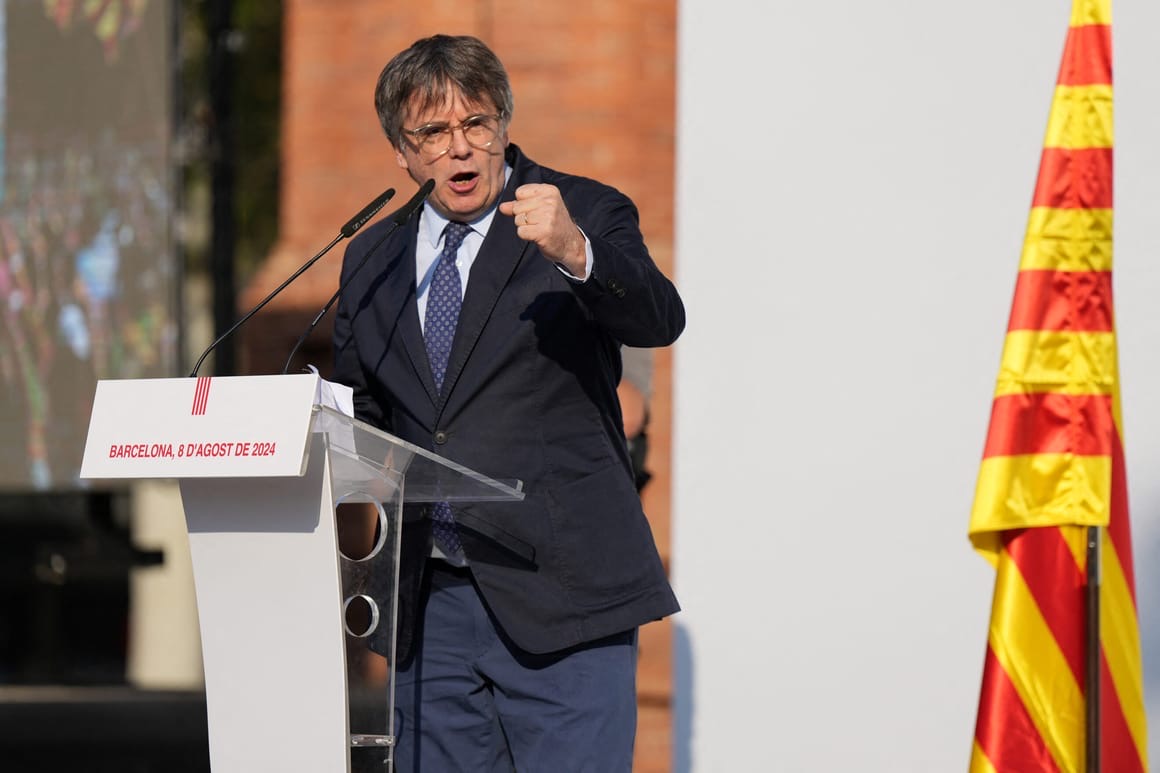Breaking
Carles Puigdemont Leaves Spain After Avoiding Arrest

Carles Puigdemont, Catalonia’s former separatist leader, has once again evaded Spanish authorities after making a brief but significant appearance in Barcelona.
The 61-year-old, who has been living in self-imposed exile in Belgium since 2017, left Spain on Thursday evening following a rally in Barcelona, where he addressed thousands of supporters before disappearing. Despite a massive manhunt and an active arrest warrant, Puigdemont managed to slip out of the country, leaving Spanish authorities scrambling for answers.
Puigdemont’s lawyer, Gonzalo Boye, confirmed on Friday that his client had fled abroad but did not provide specific details on his location. Jordi Turull, the General Secretary of Puigdemont’s Junts party, later disclosed that Puigdemont had returned to his home in Waterloo, Belgium, where he has resided for the past seven years since leading a failed bid for Catalonia’s independence.
Puigdemont’s sudden reappearance in Spain and subsequent escape have led to significant backlash from Spanish authorities. Judge Pablo Llarena, who issued the arrest warrant for Puigdemont, has demanded a full explanation from both the police and the Spanish government on how Puigdemont was able to enter Spain and leave without being apprehended. In documents released by the Supreme Court, Llarena requested detailed information from the Ministry of Interior regarding the planned arrest operation, including the specific orders issued to capture Puigdemont after his escape. The judge also asked for the names of the officers responsible for the operation’s design, approval, and execution.
The failure to arrest Puigdemont has raised serious questions about the coordination and effectiveness of the police operation. Two officers from Catalonia’s regional police force, the Mossos d’Esquadra, have been arrested in connection with Puigdemont’s escape. One of the detained officers is reported to be the owner of the car used by Puigdemont to leave the rally in Barcelona. Despite these arrests, the Mossos d’Esquadra have denied any collusion with Puigdemont’s entourage and insisted that they intended to arrest him “at the most opportune time” to avoid public disorder.
READ ALSO:Japan Earthquake and Tsunami Alert Issued After Kyushu Quake
Eduard Sallent, the chief commissioner of the Mossos, addressed the media on Friday, stating that the police had no concrete information on Puigdemont’s whereabouts following his disappearance. Sallent expressed skepticism over political claims that Puigdemont had left Spain, highlighting the ongoing uncertainty surrounding his escape. “I don’t trust what politicians have said about him leaving Spain,” Sallent remarked, underscoring the confusion and frustration within the police force.
Puigdemont’s reappearance in Spain marks his first visit to the country since 2017 when he fled after declaring Catalonia’s independence following an unauthorized referendum. The referendum, held on October 1, 2017, saw a majority vote in favor of independence, but it was swiftly declared unconstitutional by Spain’s Constitutional Court. In the aftermath, Spain imposed direct rule over Catalonia, and Puigdemont, facing charges of rebellion and sedition, fled to Belgium.
The Spanish Supreme Court granted amnesty to several leaders involved in the 2017 referendum earlier this year. However, Puigdemont and two others were excluded from this amnesty, leaving them subject to arrest if they return to Spain. This ongoing legal battle underscores the deep divisions within Spain over the Catalan independence movement and the unresolved tensions between the Spanish government and Catalonia’s separatist leaders.
As Puigdemont resumes his life in exile in Belgium, the questions surrounding his brief return to Spain and the failure of authorities to arrest him continue to loom large. Spanish judges and police are now under intense pressure to explain the apparent breakdown in their efforts to detain one of the most high-profile figures in the Catalan independence movement.

















